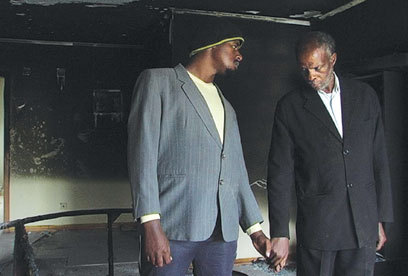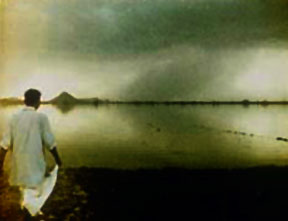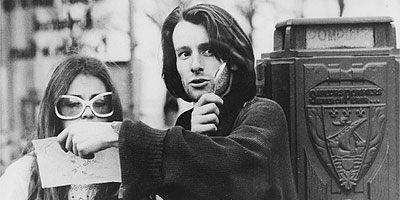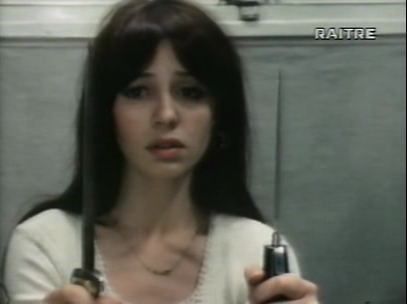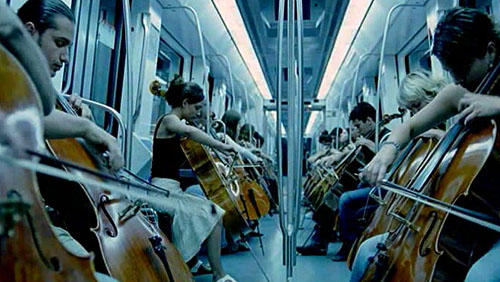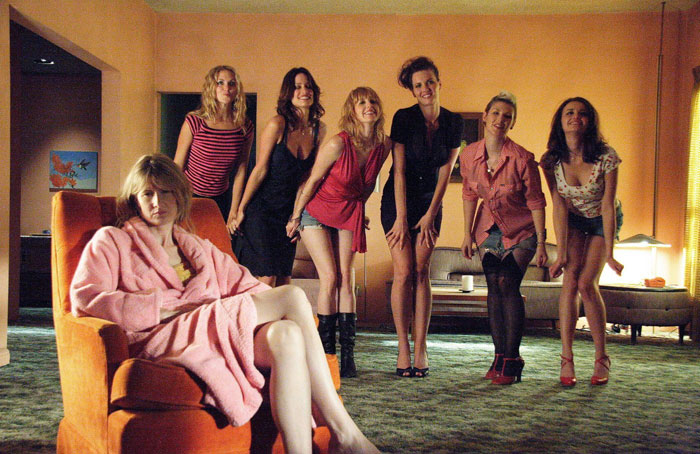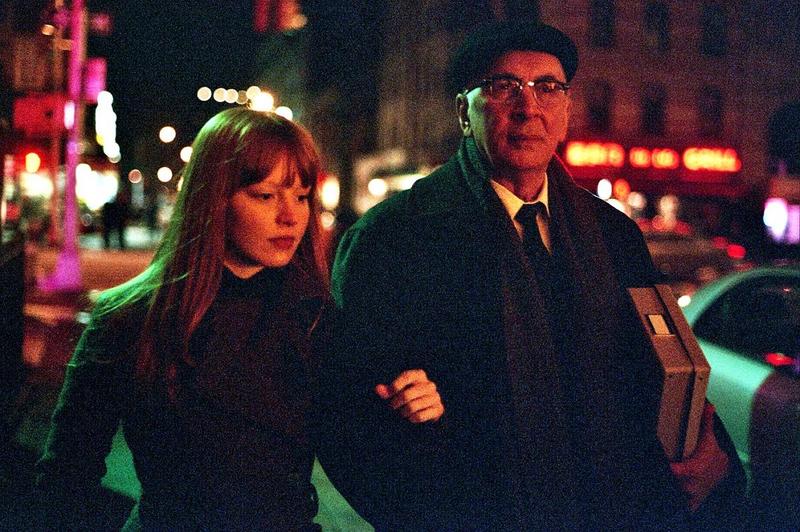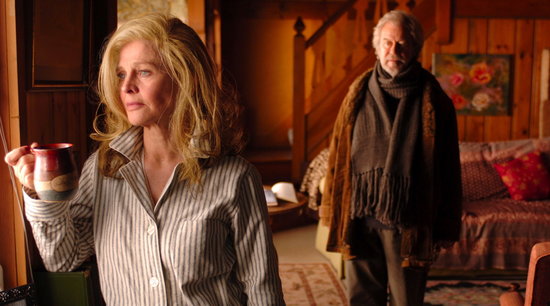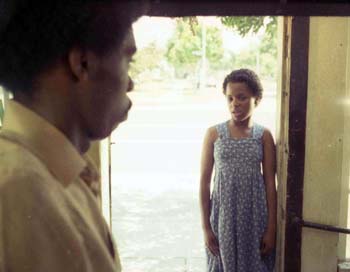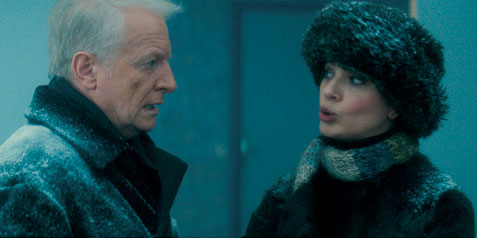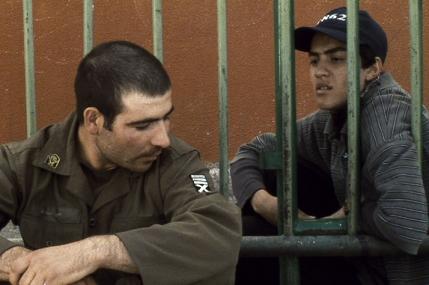From the Chicago Reader (January 3, 2008). This was the last of my annual “ten best” pieces for the Reader. — J.R.
If I were playing by the usual rules, the contenders for my best of 2007 list would be drawn from the titles only millionaires could afford to promote. In that case, I would say 2007 was the worst year for new movies I could remember. But I’d be fudging, because I didn’t come close to seeing all the contenders.
Who did? Film Comment recently put together a list of eligible titles for its own annual poll. It’s 105 pages long, with roughly 23 films per page — more than 2,400 titles. “Major studios” released 119 films, or about one-twentieth of the total (I saw 33 of them), and 49 more came from “specialty divisions” (I saw 22 of those). “Independent distributors” were behind nearly 500 (90 of which I saw). The remaining 1,600-plus titles came out of festivals (where I saw about 50 not included in the other lists).
At least 30 of the movies I saw were so forgettable that I had to look them up in the Reader’s movie database to remind myself what they were about. This is one of my profession’s occupational hazards: each film is supposed to be important when it comes out and is then forgotten soon afterward — if only to make room for more titles that are supposed to be momentarily important.
Even if you assume the only movies worth talking about are those that are accompanied by a barrage of publicity (the equivalent of saying that the 1930s’ best-selling novel The Good Earth is more important than Light in August), then I’d have to say the quality of those films has been plummeting over the past two decades. Maybe this is because much of the relatively unhampered creativity left in the industry is going into the marketing.
Yet when it comes to the list of movies making their Chicago premieres, 2007 may be the best year I can remember. This is my 21st “best of” list for the Reader and it may be my last: I’ve decided to retire as a staffer when I turn 65 in late February and won’t be reviewing many more of those dumb movies that have been weekly staples since 1987. So it’s nice to be able to sign off on an up note.
For me, the two dozen movies most worth celebrating include a dozen masterpieces that finally showed in Chicago in 2007 even though they were made earlier, one as long ago as 1959. These movies are disparate on many levels, but at least half share one significant trait: they abolish most of the distinctions commonly made between fiction and nonfiction. This is a characteristic central to my idea of cutting-edge cinema, and there’s not much new studio fare that has it.
In fact, in a movie culture predicated in many ways on planned obsolescence, where most “new” stuff is already conceived as some sort of spin-off, it’s tempting to argue that newness has less to do with when a film is made as with its power to reach and change us. It’s also worth considering what we mean by “old”: as Jean-Luc Godard pointed out in the 1960s, we’re more apt to say, “I just saw an old Chaplin movie” than “I just read an old Dickens novel.” And at a time when reading books is on the wane and seeing films on DVD is on the rise, we need to rethink some of our adjectives and some of our priorities.
1. Casa de Lava (1994), Where Lies Your Hidden Smile? (2001), Colossal Youth (2006) I’d only seen one of Pedro Costa’s six features before they came to the Gene Siskel Film Center this year. When I finally saw all of them, the impact of his work astounded me. I prefer Costa’s second film, Casa de Lava (dumbly called Down to Earth in English), maybe because it’s his only landscape film and contains so many other big-screen pleasures and mysteries. But choosing between these three is like trying to compare Carl Dreyer’s Day of Wrath, Ordet, and Gertrud: your preference will probably depend on which one you’ve seen last. All three of Costa’s films are about outsiders and improvised families, and I can’t think of another contemporary filmmaker who deals with these subjects more passionately. I’m still coming to terms with aspects of Colossal Youth (another dubious English title — the Portuguese original means “Youth on the March”), but these are plainly the kinds of works one comes to know like close friends over the span of years.
2. India Matri Bhumi (1959) The newly formed Chicago Cinema Forum’s most exciting event was its screening of the best version of Roberto Rossellini’s masterpiece — perhaps the least shown of his major works. So many people had to be turned away from the second screening at the Chopin Theatre that a third show was added the same weekend.
3. Out 1 (1971)/Out 1: Spectre (1972) Jacques Rivette’s 750-minute serial, the grandest of his experiments, is a comedy that ends tragically. His subsequent 255-minute reworking of the same improvised material is a tragedy that ends comically. Together they constitute the best films made anywhere about the 60s.
4. Bamako (2006) Globalization is placed on trial in a shared backyard in a Mali slum in Abderrahmane Sissako’s bold, sometimes hilarious experiment. It’s so up-to-date it took six months to arrive at the Music Box — unlike, say, The Astronaut Farmer, which is so irrelevant that it reached us immediately.
5. The Silence Before Bach Almost a year after the first U.S. retrospective of his work, the Catalan master Pere Portabella finally came to Chicago, presenting his feature to a packed house at the Siskel Film Center about a month after its world premiere in Venice. As a former senator of Spain who helped draft its new constitution, Portabella has a visionary grasp of Europe’s past, present, and future, and his flair for filming musical performance is often breathtaking.
6. A tie among the dozen best commercial releases: The boldest of the lot, Paul Verhoeven’s Black Book, in subtitled Dutch, is an ethically complex reply to Schindler’s List. The Disney cartoon Ratatouille is the funniest of the bunch and John Sayles’s Honeydripper, shown at the Chicago International Film Festival, is the funkiest; Blade Runner: The Final Cut is the sexiest. I’m Not There is the most academically challenging — though I wish it took more political risks, as does the narratively flawed but politically nervy In the Valley of Elah (which offers better Roger Deakins cinematography and a better Tommy Lee Jones performance than the relatively gutless, Oscar-ready No Country for Old Men). The other six are The Assassination of Jesse James by the Coward Robert Ford, The Dead Girl, Inland Empire, Letters From Iwo Jima, Margot at the Wedding, and Starting Out in the Evening. (While acknowledging the mastery of both Eastern Promises and Sweeney Todd, I can’t say I found either one more interesting than these.)
7. Away From Her (2006) Easily the year’s best first feature as well as its sweetest love story, Sarah Polley’s beautiful, devastating adaptation of an Alice Munro short story may also have the year’s best performances, by Julie Christie and Gordon Pinsent. It was shown by the Landmark chain.
8. My Brother’s Wedding A new and (for me) lesser cut of Charles Burnett’s morally nuanced 1983 feature quickly came and went at the Music Box. But you can see both cuts on a new, two-disc DVD package from Milestone that also includes Burnett’s Killer of Sheep and four of his shorts. One of them, When It Rains, is my favorite of all his films.
9. Private Fears in Public Places (2006) Even when he‘s using third-rate material (a standard-issue Alan Ayckbourn play) to bare his shriveled heart, 85-year-old Alain Resnais paradoxically remains, along with Paul Verhoeven, one of the last great Hollywood studio directors — and perhaps the most exquisite filmer of snow (real or artificial) since Orson Welles.
10. Offside (2006) Like Verhoeven, Jafar Panahi offers an object lesson to today’s suits by showing how you can become more accessible, more populist, and more politically outspoken all at the same time. But if your characters speak Farsi, forget getting any kind of mainstream distribution (one reason, I assume, why the wonderful Iranian coming-of-age story Persepolis is coming out here in French). The suits decided that brain-dead, life-denying stuff like The Heartbreak Kid was more our speed than a life-enhancing comedy about girls in Tehran sneaking into a soccer match, and this turned up at the Music Box instead of the malls.


